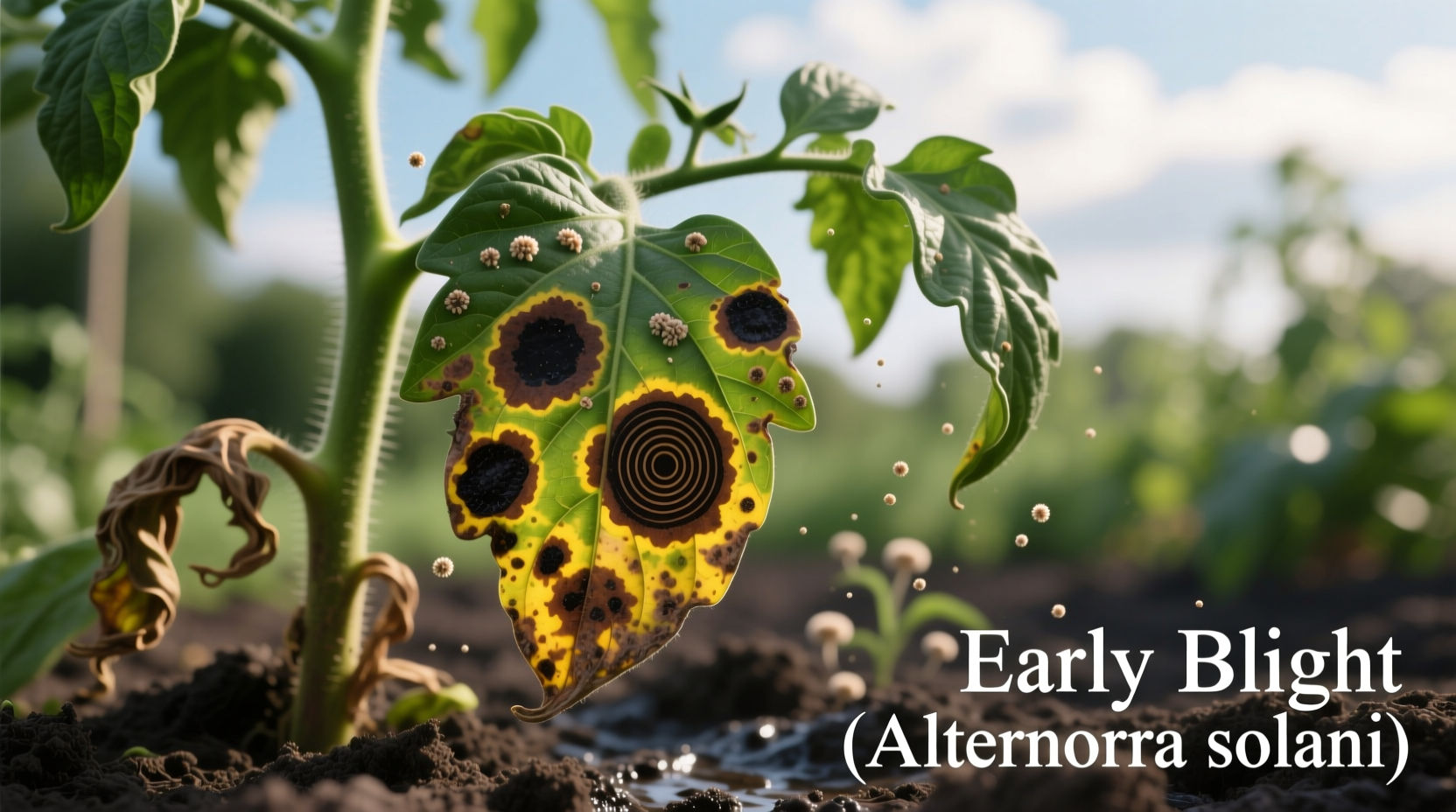Nothing ruins a gardener's summer faster than discovering mysterious spots, wilting leaves, or stunted growth on prized tomato plants. Whether you're a first-time container gardener or managing a backyard patch, understanding how to diagnose and treat tomato problems saves your harvest and prevents future outbreaks. This comprehensive guide walks you through the exact diagnostic process used by extension specialists, with science-backed solutions you can implement today.
Why Your Tomato Plants Are Struggling: The Diagnostic Framework
Before reaching for pesticides, follow this systematic approach used by agricultural extension services. Most tomato problems fall into four categories:
| Problem Category | Key Indicators | Immediate Action |
|---|---|---|
| Fungal/Bacterial Diseases | Spots with concentric rings, yellow halos, fuzzy growth | Remove affected leaves, apply copper fungicide |
| Pest Infestations | Chewed leaves, tiny insects, sticky residue | Identify pest, apply targeted organic treatment |
| Nutrient Deficiencies | Uniform yellowing, purple undersides, blossom end rot | Soil test, amend with specific nutrients |
| Cultural Issues | Cracked fruit, sunscald, blossom drop | Adjust watering, provide shade, hand-pollinate |
Spotting the Culprit: Visual Diagnosis Guide
Accurate identification prevents wasted effort. University agricultural extensions report misdiagnosis as the #1 reason home gardeners fail to resolve tomato problems. Compare your plant's symptoms to these common issues:
Fungal Disease Identification
Early Blight (Alternaria solani): Starts as small black spots with concentric rings on lower leaves, progressing to yellowing and defoliation. Cornell University's Vegetable MD Online confirms this affects 60-80% of home gardens annually when conditions are humid.
Septoria Leaf Spot: Numerous small gray spots with dark borders and tiny black fruiting bodies. Unlike early blight, it typically appears higher on the plant first. The USDA notes this spreads rapidly after rain events.
Fusarium Wilt: Yellowing starts on one side of the plant, progressing to complete wilting while stems remain green. A vertical stem cut reveals brown vascular tissue. This soil-borne fungus persists for years—crop rotation is essential.

Pest Problem Recognition
Hornworms: Look for black droppings (frass) on leaves below feeding sites. These large caterpillars blend perfectly with foliage. The University of California IPM program reports they can defoliate plants overnight during peak season.
Spider Mites: Fine webbing on leaf undersides, stippled yellow appearance. Hold white paper under leaves and tap—red or brown moving specks confirm infestation. These proliferate in hot, dry conditions.
Nutrient Deficiency Clues
Blossom End Rot: Dark, sunken spots on fruit bottoms. Despite common belief, this isn't calcium deficiency in soil but inconsistent watering disrupting calcium uptake. Michigan State University Extension confirms proper moisture management prevents 90% of cases.
Magnesium Deficiency: Yellowing between leaf veins while veins remain green, starting on older leaves. This often occurs in acidic soils or after heavy potassium application.
Effective Treatment Protocols by Problem Type
Generic solutions fail because each problem requires specific intervention. Here's what actually works according to agricultural research:
Fungal Disease Management That Works
For Early Blight and Septoria:
- Remove all affected leaves (don't compost—bag and discard)
- Apply copper fungicide every 7-10 days during wet periods
- Water at soil level to prevent splash transmission
- Space plants for airflow (minimum 24" between determinate varieties)
The Cornell Cooperative Extension reports these cultural practices reduce disease severity by 70% compared to chemical-only approaches. Note: Copper fungicides work preventatively but won't cure established infections.
Pest Control Without Harming Beneficial Insects
For Hornworms: Hand-pick at dawn or dusk when most active. For severe infestations, apply Bacillus thuringiensis (Bt) which specifically targets caterpillars without harming bees.
For Spider Mites: Spray undersides of leaves with strong water jet every 3 days. Introduce predatory mites (Neoseiulus fallacis) when temperatures exceed 70°F. Avoid broad-spectrum insecticides which kill natural predators.
Nutrient Correction Strategies
Blossom End Rot Fix: Maintain consistent soil moisture (1-2 inches weekly). Mulch with straw to regulate temperature and moisture. Apply calcium nitrate spray (4 level tablespoons per gallon) directly to affected plants every 7 days during fruit set.
Magnesium Deficiency Solution: Apply Epsom salt solution (1 tablespoon per gallon) as foliar spray. For long-term correction, add dolomitic lime to raise soil pH and provide magnesium.
Critical Context: When Solutions Fail and Why
Many gardeners repeat ineffective treatments because they miss these crucial context factors:
- Timing matters: Fungicides must be applied before symptoms appear for prevention. Once lesions form, focus shifts to containment.
- Weather impacts efficacy: Copper fungicides wash off in rain—reapply after 0.5" rainfall. Neem oil becomes phytotoxic above 90°F.
- Soil conditions dictate solutions: Raised beds with drainage solve 80% of root rot cases, but container plants require different moisture management.
- Plant variety affects susceptibility: Disease-resistant varieties (marked VFN on tags) prevent fusarium, verticillium, and nematode issues but not all problems.
Prevention: Your Season-Long Protection Plan
Extension specialists emphasize prevention over cure. Implement this timeline for healthy plants:
| Timeline | Preventive Action | Research Source |
|---|---|---|
| Before Planting | Test soil pH (aim for 6.2-6.8), amend with compost | University of Minnesota Extension |
| Transplanting | Bury stem up to first leaves, add mycorrhizal inoculant | Oregon State University Extension |
| Early Season | Apply preventative copper spray before symptoms appear | Cornell Vegetable MD Online |
| Throughout Season | Water deeply 1-2x/week (not daily), mulch with straw | Utah State University Extension |
When to Cut Your Losses
Some problems aren't worth fighting. The USDA advises removing and destroying plants affected by:
- Tomato spotted wilt virus (distinct circular spots with concentric rings)
- Fusarium or verticillium wilt in non-resistant varieties
- Nematode damage (stunted growth with knotted roots)
These soil-borne pathogens persist for years. Continuing treatment wastes effort and risks spreading to healthy plants.
Proven Companion Planting Strategies
Research from the Royal Horticultural Society shows these companion plants reduce pest pressure:
- Basil: Repels thrips and hornworms while improving flavor
- Marigolds: French varieties (Tagetes patula) suppress nematodes
- Onions/Garlic: Deter aphids and red spider mites
Plant companions within 12" of tomato stems for maximum benefit.











 浙公网安备
33010002000092号
浙公网安备
33010002000092号 浙B2-20120091-4
浙B2-20120091-4